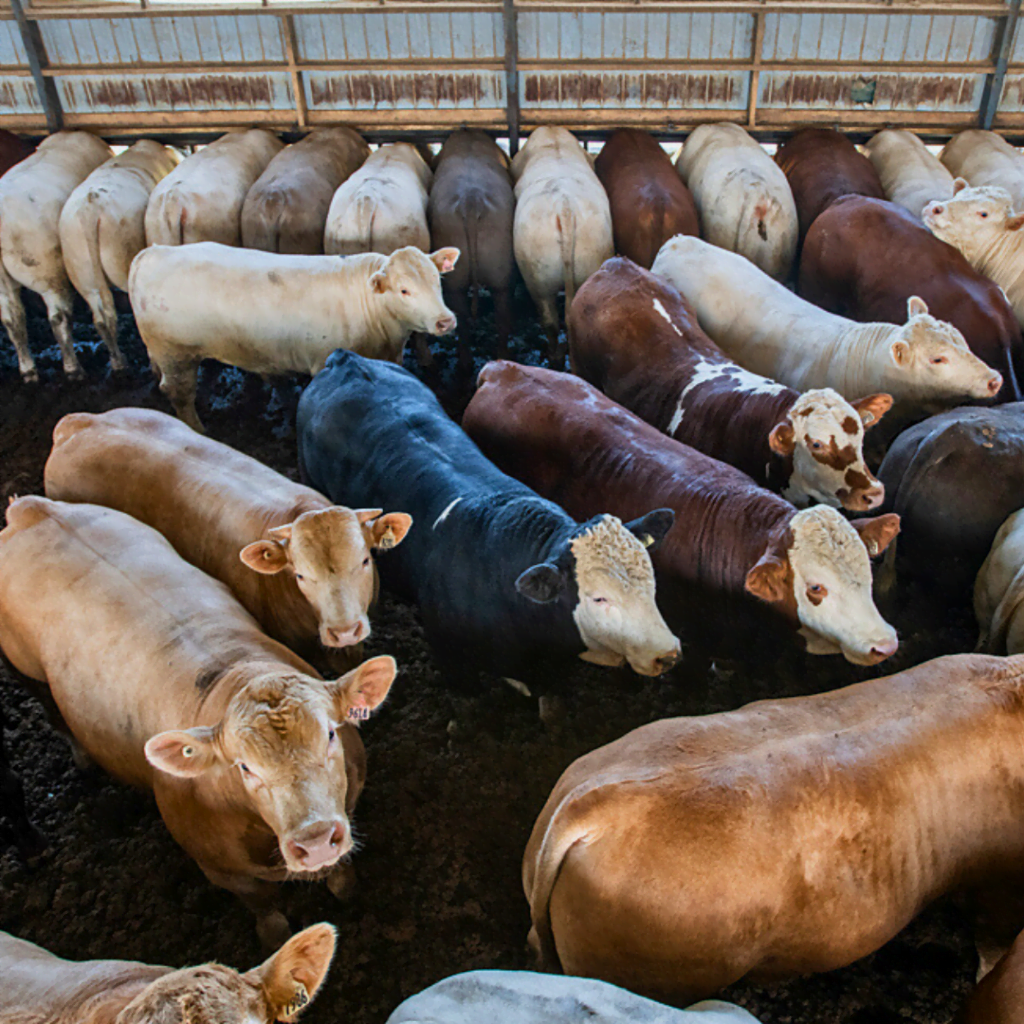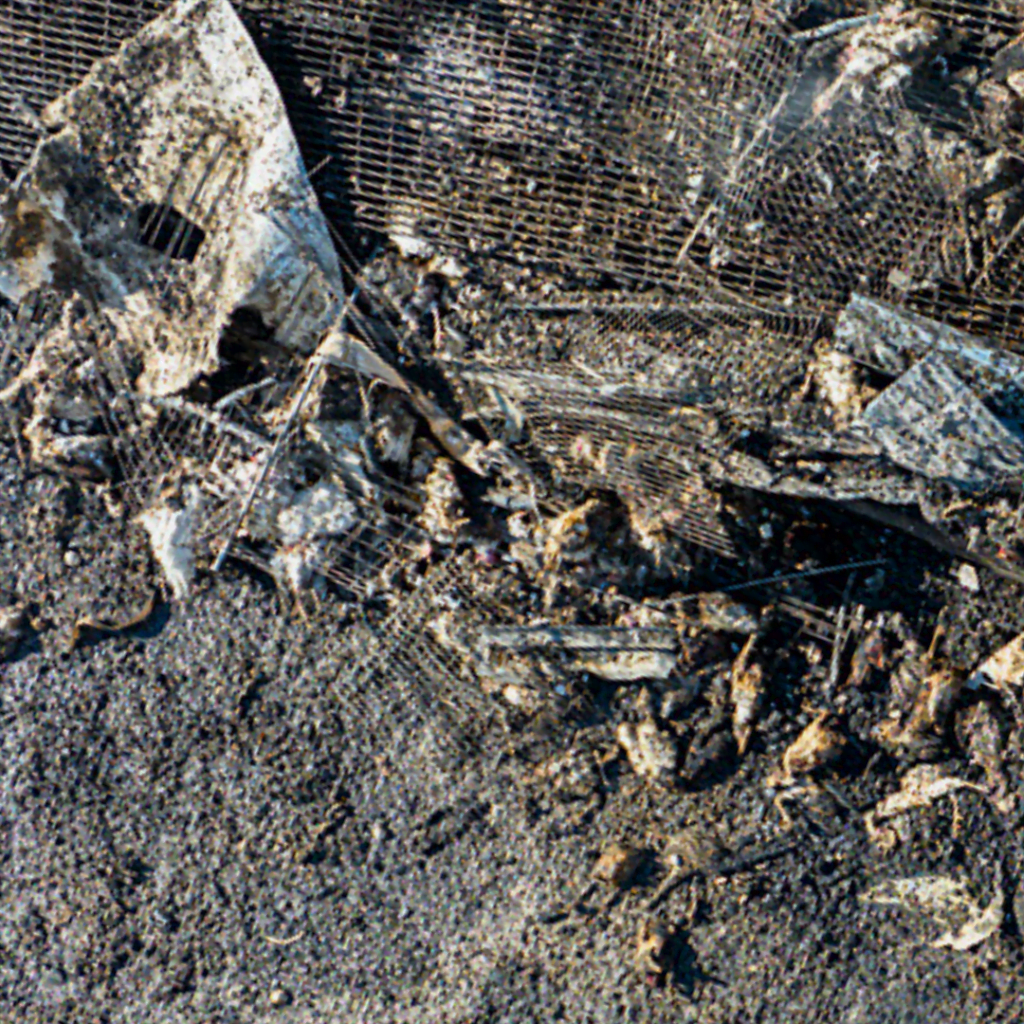Did you know that animals found on farms, such as cows, pigs, and chickens, have cognitive abilities similar to those of companion animals like cats, dogs, or horses? They can also experience joy, fear, excitement, boredom and other emotions.
It could therefore be assumed that farmed animals enjoy the same living conditions and legal protections as companion animals but, actually, that is not the case.
Every day in Canada, more than 2.3 million farmed animals are slaughtered for human consumption.¹
There was a record high in 2022, with the death of 854 million farmed animals—that’s 22 times higher than the country’s human population. However, these figures include neither the animals who die on farm or during transportation nor all the male chicks killed in the egg industry.
Since 2015, the Civil Code of Quebec has recognized that animals—all animals—are sentient beings and not simply property. Yet, nearly a decade later, the vast majority of Quebec’s animals (i.e. those destined for consumption) are treated as mere commodities by an industry that systematically compromises their well-being.
Learn more about each of these species
From small family farms to factory farms: The evolution of animal agriculture
The term “farm animals” often brings to mind idyllic scenes of cows and their calves peacefully grazing in a flower-strewn field, a rooster crowing at dawn or a family of pigs happily wallowing in the mud. This comforting imagery may seem to ring true, especially for those who played with the iconic Fisher-Price farm toy as children or read stories with farm animal characters. However, it is a far cry from the reality of modern farms, which now resemble factories.
Fig. 1 An example of a bucolic representation of farmed animals, where photos of calves appear to have been superimposed on a photo of a sunny field.
The lives of animals raised for consumption in Quebec
The vast majority of animals destined for consumption in Quebec are raised in industrial (or “intensive”) farming conditions, involving production environments and practices designed to maximize meat, egg or milk output while minimizing costs.
This approach often entails confining animals to limited spaces, typically in closed buildings, to accommodate a high density of animals. As a result, animals are deprived of their ability to move comfortably, to express their natural behaviours and to interact normally with others of their kind. This is particularly evident in the case of caged laying hens, sows confined in gestation crates and dairy cows in stalls.2

Farmed animals and legislation
Cows, chickens, pigs and other farmed animals are currently excluded from the main, yet fundamental, protections of the Animal Welfare and Safety Act.
Section 7 of the Act excludes from its main protections all animals used for agricultural purposes, namely those set out in section 5 (obligation of the owner or guardian of an animal to provide them with water, food, shelter, care, etc.) and section 6 (prohibition on anyone causing distress to an animal), provided they are treated in accordance with the “generally recognized rules” of the industry. However, these “rules” are not explicitly defined in the law. Consequently, any practice widely adopted by the industry is considered to be “generally recognized.” This means that the industry itself determines which practices are exempt from the law and are thus legal.


That’s why it’s perfectly legal and even common practice to castrate a piglet without anesthesia, even when the same action on a dog or a cat would result in prosecution and even imprisonment.
This exemption from section 7 essentially allows the private sector to self-regulate. As such, it is the government’s abdication of responsibility. It’s time to do better to protect all animals in Quebec.3
Codes of practice
In the agri-food industry, most sectors that involve animals already contribute to the development and revision of Codes of Practice through the National Farm Animal Care Council (NFACC). These Codes serve as national guidelines, outlining recommended practices for animal care. These Codes carry no legal weight in Quebec, and adherence to them is voluntary.
Additionally, the industry plays a significant role in elaborating and refining these codes, often holding majority representation on the committees responsible for their development.
Some sectors claim to require their producers to comply with the Codes of Practice. However, that compliance with these standards is required by the industry itself, rather than by the government, raises many concerns. First, the system in place to ensure compliance with the Codes generally involves verification conducted by industry players, rather than by an independent third party. Second, the sanctions for non-compliance are also set by the industry. Third, since it is private, the oversight system is not subject to the same requirements for transparency and accountability as public monitoring systems.
The provinces of Newfoundland and Labrador and Prince Edward Island have made adherence to NFACC’s Codes of Practice mandatory.4
Fig. 5 Laying hens in battery cages, Quebec.
Regulations for animals raised for consumption
While there are no regulations specifically overseeing the treatment of animals during their life on-farm, their transportation and slaughter are subject to various federal and provincial laws. The transportation of animals raised for consumption is governed by the federal Health of Animals Regulations and the provincial Animal Welfare and Safety Act.5 Their slaughter is governed by the Safe Food for Canadians Regulations at the federal level, and the Regulation Respecting Food at the provincial level.
Barn fires
Fires in agricultural buildings housing animals pose a significant threat across Canada, including in Quebec. Unfortunately, animal deaths are not individually documented in fire reports from the Ministère de la Sécurité Publique. Instead, they are included in overall material losses to a building’s contents. As a result, there are no official statistics on the number of animals lost in such fires.6
The prevalence of these fires in Quebec can be attributed to the absence of regulations, coupled with the fact that most agricultural buildings were constructed in the 1950s or 1960s using flammable materials and outdated electrical systems. These structures lack basic safety features like smoke or heat detectors and sprinkler systems.

In Quebec, there are no regulations requiring producers to take the necessary precautions to protect animals in the event of a fire.
What you can do to help animals raised for consumption
There are several ways you can join us in helping animals raised for consumption:
Support our manifesto Sign to protect them.
Learn more about these fascinating animals in our French-language podcast Au nom des animaux. Share with your friends and family! It is also available on Google Podcasts, Spotify and Apple Podcasts.
You can advocate for the adoption of policies that promote a sustainable food transition. Reducing our consumption of meat and animal products is the best way to reduce animal suffering at the source.
Write to your MNA. Check out our political action guide.
Voice your opposition to Bill C-275, which would make it even more difficult to report abuse of farmed animals.
What the Montreal SPCA is doing to protect animals raised for consumption

The Montreal SPCA regularly appears in the media to raise public awareness of the issues surrounding animals raised for consumption. Here are some of our recent appearances:
- Me. Sophie Gaillard, Director of Animal Advocacy and Legal and Government Affairs at the SPCA, speaks out in a Radio-Canada report on the lack of a legal framework for farmed animals (April 18, 2023)
- Interview by Sophie Gaillard with TVA Nouvelles on the same subject (April 18, 2023)
We have also prepared a reform document on animal protection for provincial political parties, with an entire section devoted to animals used in agriculture. It is available to read online (French only): La protection des animaux au Québec : propositions de réformes.
Finally, you can consult our past and ongoing campaigns about animals used in agriculture:
- Ban the export of live horses for slaughter. We encourage Canadians to write to their federal representatives to demand a ban on the export of horses for slaughter.
- Dairy cows need you. We urged the public to weigh in on the overhaul of the National Farm Animal Care Council (NFACC) Code of Practice by highlighting five critical issues compromising the welfare of dairy cows and their calves.
- ANIMAL. This campaign was created to urge the government to grant legal protection to farmed animals.
Photo credits:
- Banner photo, from left to right: © Victoria de Martigny/We Animals Media, © Jo-Anne McArthur/We Animals Media, © Existence/We Animals Media
- Fig. 1 Photography: © natmint/Getty Images
- Fig. 2 Photography: © Jo-Anne McArthur/We Animals Media
- Fig. 3 Photography: © Jo-Anne McArthur/Sibanye Trust/We Animals Media
- Fig. 4 Photography: © Audrey Loiselle
- Fig. 5 Photography: © Existence/We Animals Media
- Fig. 6 Photography: © Wes Burdett/We Animals Media
- Fig. 7 Photography: © Audrey Loiselle
Sources:
- 1 https://www.ledevoir.com/societe/consommation/777140/consommation-deux-millions-d-animaux-abattus-chaque-jour?fbclid=IwAR2W4DFDYwG0R1qQ1SNhl-S7TC40J74dBFjITBt2cKiw9NThqrecNUYmboM
- 2 https://signezpourlesproteger.ca/
- 3 https://signezpourlesproteger.ca/
- 4 https://signezpourlesproteger.ca/
- 5 https://signezpourlesproteger.ca/
- 6 http://cetfa.org/fr/incendies-de-batiments-agricoles-ayant-tue-desanimaux-de-ferme-au-quebec-depuis-janvier-2015/






